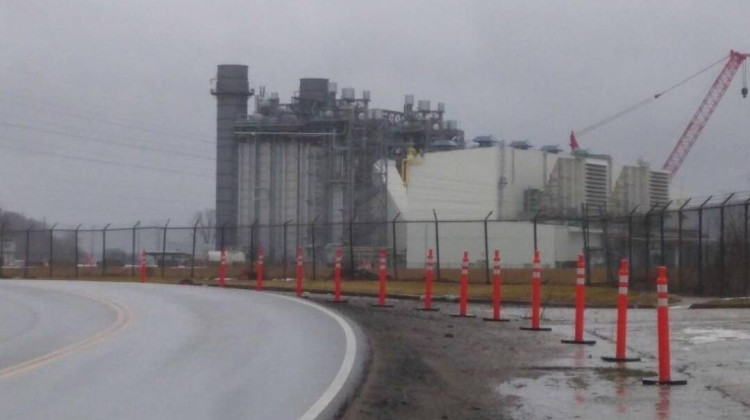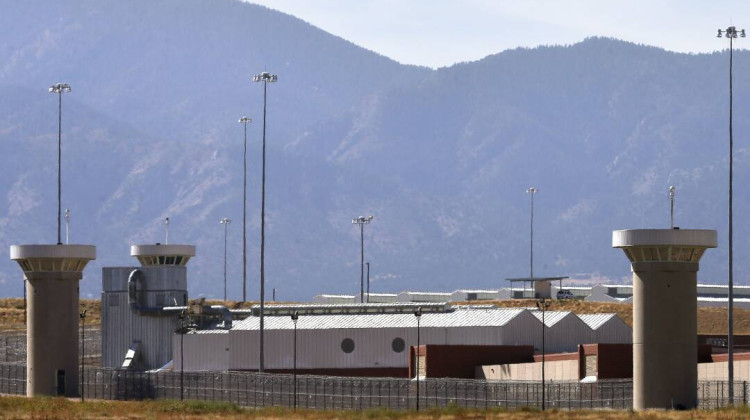
AES Indiana has proposed building a natural gas plant with roughly the same capacity as its Eagle Valley facility in Martinsville.
Rebecca Thiele / IPB NewsThe electric utility that serves Indianapolis is prepared to add a lot of natural gas to serve data centers that move into its territory. AES Indiana went over its plan for the next decade and a half with stakeholders Wednesday.
If the company signs contracts with data centers, it plans to build a 700 megawatt natural gas plant — roughly the size of its Eagle Valley facility. It would also add about the same amount of megawatts in gas peaker plants — which only run when energy demand is high.
Patrick Maguire is senior director of commercial with AES. He said because no data center has officially contracted with the utility, it's too early to say how AES would cover the cost of new gas to serve them.
"We're approaching all discussions with potential data center customers carefully and with the goal to protect existing customers, however we proceed," Maguire said.
NIPSCO and Indiana Michigan Power have taken different approaches to help shield their customers from rate increases.
All together, the plan for data centers could increase AES's carbon emissions by nearly 70 percent. AES is already working to convert part of its Petersburg coal plant to natural gas by the end of next year.
The move to more natural gas marks a change from what AES proposed three years ago, which called for mostly wind and solar.
Megan Anderson is with the Sierra Club's Beyond Coal campaign in Indiana.
"It's really disheartening to see that AES Indiana is exploring building gas — and only gas — to power data centers. And, you know, likely much of those costs will fall on to customers," she said.
READ MORE: Report: Indiana utilities 'backsliding' on the transition to clean energy
Looking for answers on climate solutions and climate change? Find more of our reporting through our project ipbs.org/climatequestions.
Anderson said she's concerned a law passed this year to expedite power for data centers would mean less of a chance for the public to weigh in.
Maguire said the utility did consider a scenario to serve data centers with all clean energy sources, but that it wasn't as cost-effective for customers.
The utility's parent company, AES Corporation, aims to have net zero emissions from electricity sales by 2040 and go net zero entirely by 2050.
With or without data centers, AES plans to build battery storage and work on energy efficiency and what's called "demand response." That's where a utility offers incentives to some residents or businesses to use less power when the demand for electricity is high — which helps prevent blackouts.
AES Indiana will file its long-term plan with the Indiana Utility Regulatory Commission next week.
Rebecca is our energy and environment reporter. Contact her at rthiele@iu.edu or on Signal at IPBenvironment.01. Follow her on Twitter at @beckythiele.
 DONATE
DONATE







 Support WFYI. We can't do it without you.
Support WFYI. We can't do it without you.